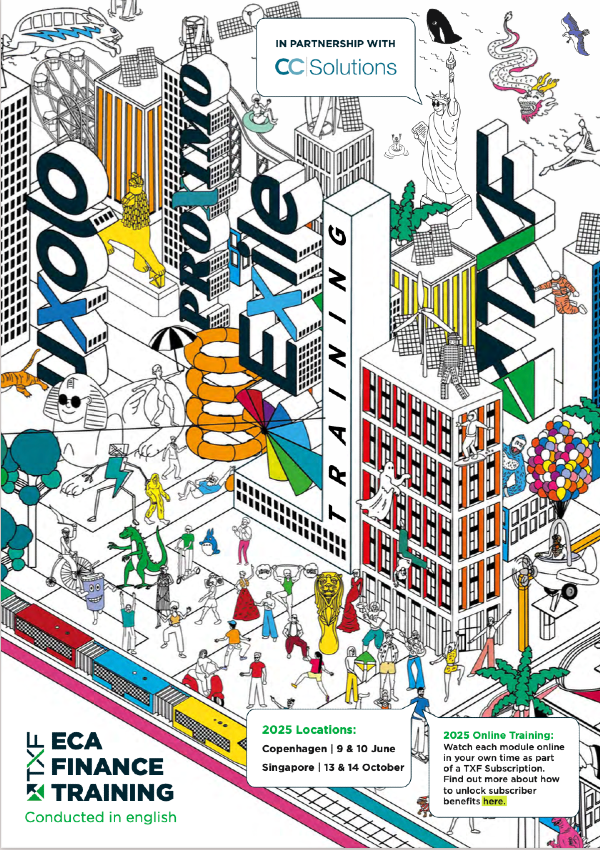Top takeaways from TXF Americas 2022
Last week, TXF welcomed back the Americas structured trade and export finance community to the heart of Miami. Elsa Fucile from TXF discusses the key discussion points from the event.

After two long years, TXF welcomed the leading decision makers in the Americas back to sunny Miami in its first hybrid edition since March 2020. However, we did host TXF Americas virtual in 2021 with plenty of updates shared. Given the recent developments of Eastern Europe, sustainability as a leading topic was dethroned. Uncertainty related to geopolitics, inflation, and elections are to set the tone for the rest of 2022. However, not all is doom and gloom financial institutions from all corners of the STEF industry are poised to provide the right support for its clients. On the commodity front, while pricing remains high and the Russian-Ukraine conflict continues, Latin America will be able to benefit. Many other items were high on the agenda and here are the top takeaways:
The uncertainty continues
The Americas are far away from the Russia-Ukraine conflict, yet the region is still being impacted, not just with regards to war but also due to tensions and the overall geopolitical landscape. The implications for Latin America are positive on the commodity front with countries in the region being both end producers and exporters who will be able to fill some of the gaps that are being left. We can expect to see a movement towards deglobalisation resulting in greater market segmentation in areas such as energy or food and agriculture. Inflation remains a problem for most countries in the region which is set to last longer given the increase in oil prices and Central Banks attempting to intervene to mitigate further economic damage.
Rushing towards sustainability
Calls for a standardised definition of “sustainable” grow as the ECAs, banks, SPOs and borrowers define the concept under their respective terms. There is a definite push-pull strategy taking place between financiers and their clients and questions surrounding the best approach to meet ESG KPIs is still pending. Collaborative industry initiatives such as the ICC Sustainable Export Finance White Paper aims to iron out a common framework towards standardisation. Additionally, governments have made commitments to achieve net-zero and ECAs as representative institutions must also align with those goals.
The “E” is still the primary focus; however, the “S” and “G” are now gaining momentum. The biggest question now are upcoming defence deals and whether those transactions will be able to fall under the “G” commitments. Regardless of the result, ESGs are at the top of the agenda.
Borrowers must overcome the political challenges
Geopolitical risk is one of the biggest challenges borrowers in the Americas are facing as the lack of stability and continuity is resulting in hesitation from financiers. Mitigating political risk in combination with profitability being unclear adds to the hesitation. Examples of this include the energy sectors in Argentina and Mexico where the political agendas and financial stability have halted past project pipelines.
Unlike its Latin American counterparts, hope is on the horizon for US exporters with the announcement of the Build Back Better infrastructure plan launched by the Biden administration. Many have noted this will be a prime opportunity for US EXIM to bounce bank, provide for flexibility on content eligibility and innovation for its clients. We are expected to see a shift in mobilising capital for domestic projects where there is a US export focus such as LNG terminals.
DFIs are stepping in
DFIs are having to shift their priorities away from the pandemic as the dust settles. Why go to a DFI when you can go via a bond route, ECA, or commercial bank? Their additionality is their “doing good” element, where all investment and aid provided is aimed towards the SDGs, ESGs, and being aligned with the Paris Agreement in all that they do. LatAm unlike other regions has proven to be more of a challenge in that regard.
Old and new faces in credit and political risk insurance
The divide of using insurance between Europe and the Americas continues, however the exit of two major insurers provides an opportunity for new and old faces to fill the market gap. SRTs and CLOs still working with bank customers and evolution of their relationship has changed materially to a partnership. The key remains to provide greater transparency in different asset classes to give more capacity for underwriters by exchanging more information. Private equity and pension funds fall under a different category and an area that has been a difficult group to target the right people to deploy the product. However, there have been structures that have been developed and executed to bring in the alternative capital. An example of this is the leap structure is an example where they team up with a DFI, multilateral, or sovereign lending to provide coverage pension funds. Many times, 100% covered because they often can only face investment grade risk.
Want to revisit the discussion? The event content is now available online via out virtual event platform. For all TXF export finance members and past delegates, you can register here
If you would like more information on TXF membership, please contact: membership@txfmedia.com





